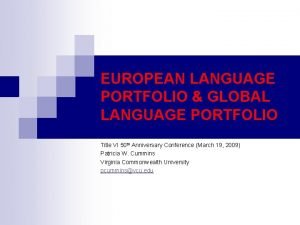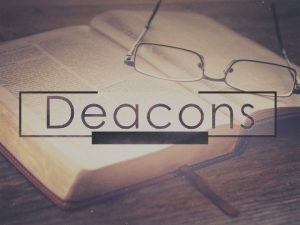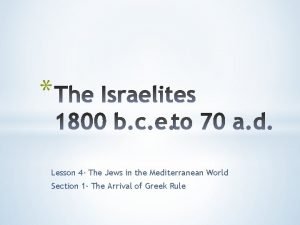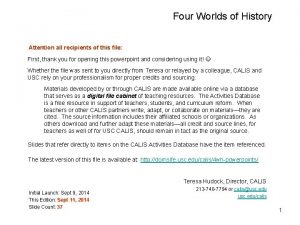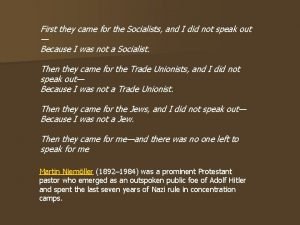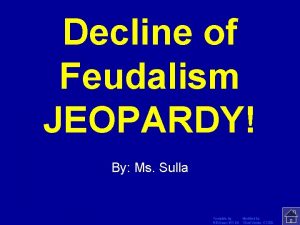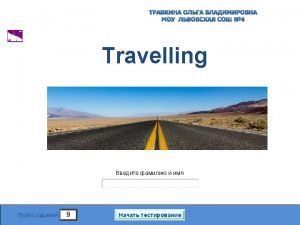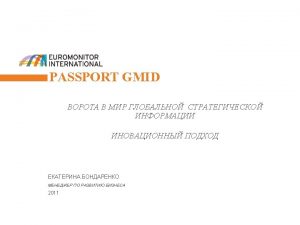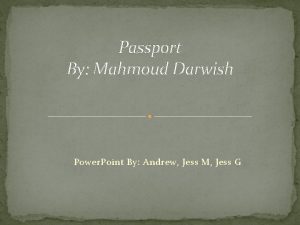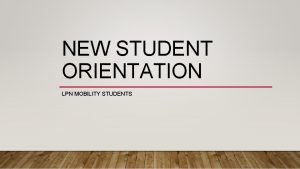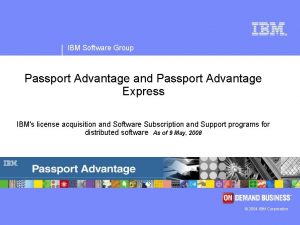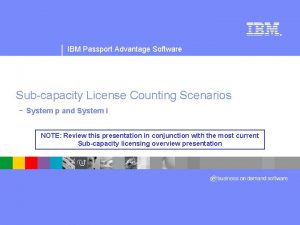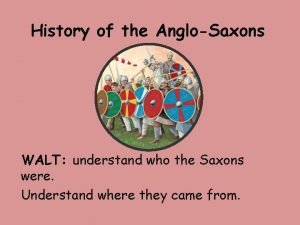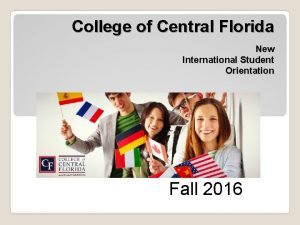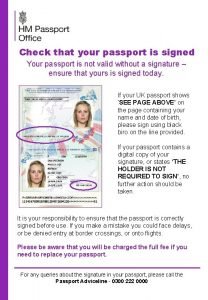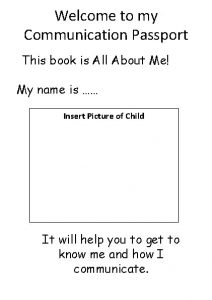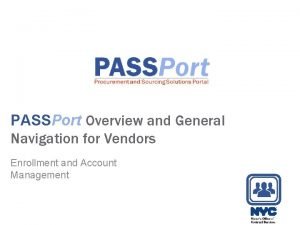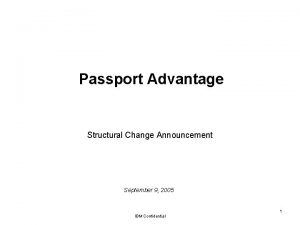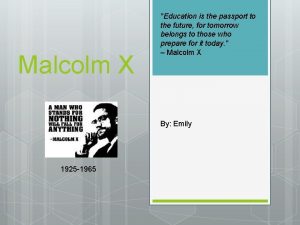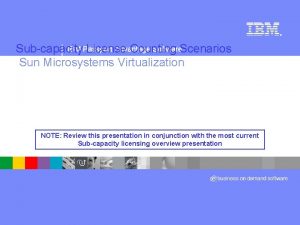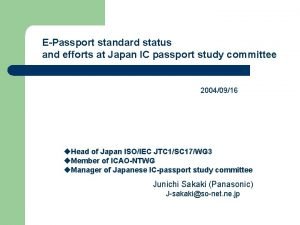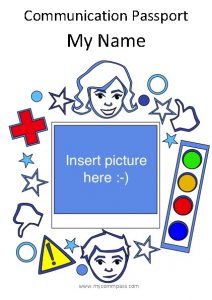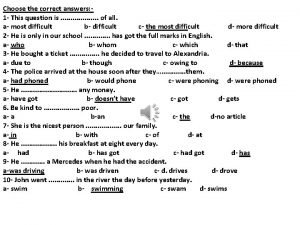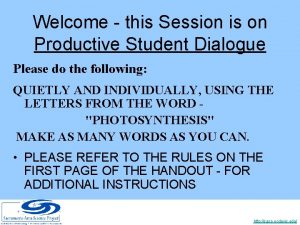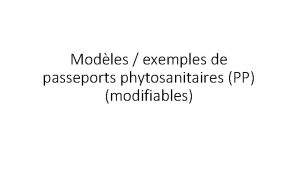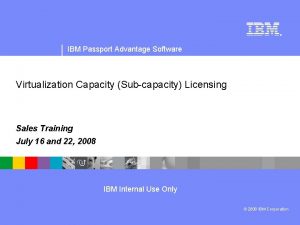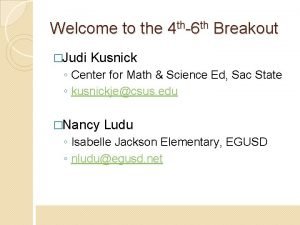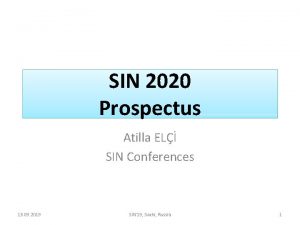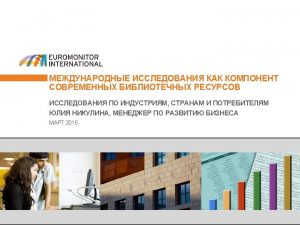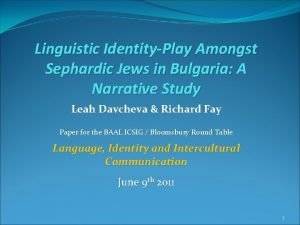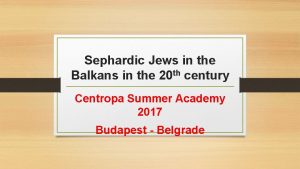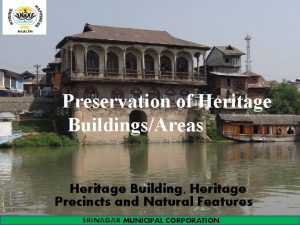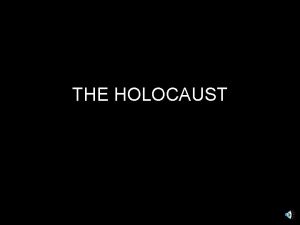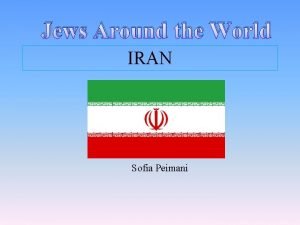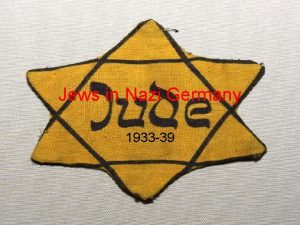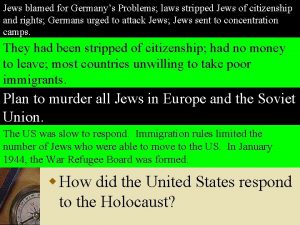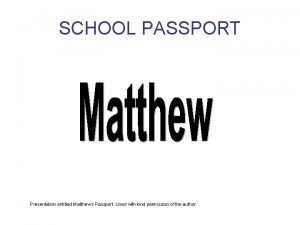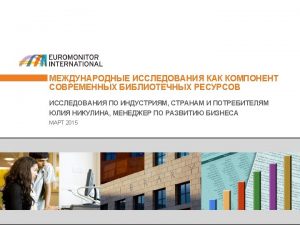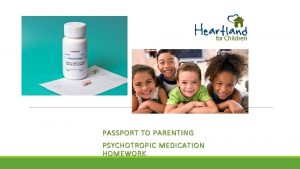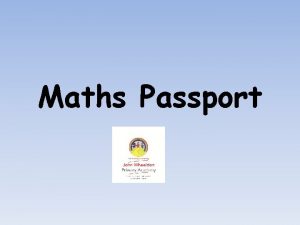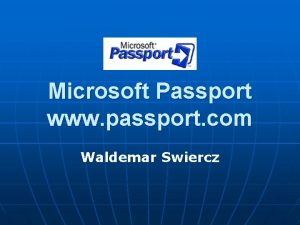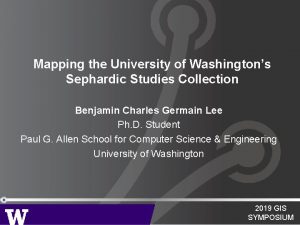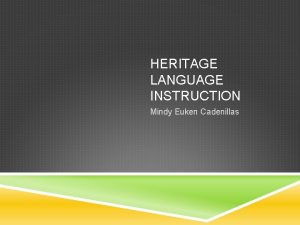Passport to Heaven Sephardic Jews as Heritage Language








































- Slides: 40

Passport to Heaven? Sephardic Jews as Heritage Language Speakers

OUTLINE OF THE PRESENTATION Law 12/2015: linguistic and cultural aspects Its impact in different contexts Its impact in Israel The DELE and CCSE Exams in Israel The Tel Aviv Cervantes Institute’s Itinerario “Pasaporte” Who are the students of the Itinerario Heritage Language Students Conclusion

31 March 1492 “A ti, Espania bienquerida, nosotros madre te llamamos”. (…) “Aunque tu nos desterraste como madrastra de tu seno, no estancamos de amarte como santísimo terreno, en que dejaron nuestros padres a sus parientes enterrados”. “Beloved Spain, whom we call mother. ” (…) “Even though you exiled us from your bosom like a stepmother, we do not stop loving you, most hallowed land, where our fathers left their buried ancestors behind. ” (Abraham Cappon (Bulgaria, 1853 -1931)

The Law 1/10/2015: Grants Law 12/2105 Spanish citizenship to descendants of Sephardic Jews Regulates 2 the situation of foreigners in Spain requirements: language and culture Pass the DELE A 2 Exam Pass the CCSE Exam

Dissonance Text of the Law Emphasis on Diaspora / 5 centuries Appreciation of maintenance of Judeo-Spanish BUT requires proficiency in modern Spanish at CEFR A 2 level Usage of Ladino: proof of belonging to a Sephardic community Ladino-speaker = student of Spanish as a foreign language > same exam

(ABC, 2/10/15) Diario ABC, 2/10/15

Research Data Non-Spanish-speaking countries With Sephardic population With Cervantes Institute (8 in total) From 6 countries: Bulgaria, U. S. A. , Greece, Israel, Morocco and Turkey

Candidates DELE A 2 Cervantes Institute in Tétouan Month / Year 2014 2015 2016 April 0 2 49 May 8 5 42 July 0 0 - October 0 0 - November 5 8 - (Data, CI in Tétouan)

Candidates DELE A 2 Cervantes Institute in Marrakesh Month / Year 2014 2015 2016 April 0 0 0 May 6 7 49 July 0 0 - October 0 0 - November 16 14 - (Data, CI in Marrakesh)

Candidates DELE A 2 Cervantes Institute in Athens Month / Year 2014 2015 2016 April 0 0 0 May 122 48 77 July 0 41 - October 0 0 - November 29 57 - (Data, CI in Athens)

Candidates CCSE (6 Exam Sessions) CI Center Casablanca 2015 -2016 26 Fez Marrakesh Rabat Tétouan Athens New York Sofia Istanbul Tel Aviv 16 12 11 52 3 77 5 51 182

CCSE Exam 10 annual sessions Last Thursday of every month Maximum: 25 50 candidates in the CI in Tel Aviv Multiple choice questions: Spanish Constitution (60%) Socio-cultural reality of Spain (40%) Passed 15 45 (60%) minutes

Impact 1 - Israel: 1 Cervantes Institute Center Population 2 (Total): 8, 000 Morocco: 5 Cervantes Institute Centers Population (Total): 33, 000

Impact in Israel - Huge (I) Reasons: Demographic mosaic Immigrant country (40% Jews = immigrants) Part of individual and collective identity Importance of culture of origin Geopolitical instability Permanent tension, constant risk of war Locked-in sensation: closed borders with Lebanon and Syria cold peace with Egypt and Jordan

Impact in Israel - Huge (II) Obsessive desire foreign passport: In order to emigrate In order to flee the country at once Until now, Ashkenazis Now, the turn of the Sephardis has arrived: Ø Consular Section of the Spanish Embassy and the CI inundated with requests for a Spanish passport Ø Unique profile of Spanish learner

Israel and International Language Exams Uncommon Lack of knowledge Informal nature of society Preference Foreign for face-to-face encounters documentation > DELE Exam, very rare

Candidates DELE A 2 Cervantes Institute in Tel Aviv Month 2014 2015 2016 April 0 0 103 May 0 0 36 July 0 8 - October 0 31 - November 0 52 - From Nov. 2015 to April 2016 > 98%

Candidates CCSE (2015 -16) Cervantes Institute in Tel Aviv SESSION CANDIDATES October 11 November 50 January 50 February 28 March 43 TOTAL 182

Itinerario Pasaporte: 155 hours (8 months) Pasaporte 1 Pasaporte 2 Pasaporte 3 Preparation for DELE A 2 45 hours 20 hours

Challenges of the Itinerario Tension regarding stipulated deadline Language learning (or reinforcement) Accessible prices Placement test

Origins of the Itinerario Students 33% 42% 23% nacidos en Israel nacidos en Marruecos Nacidos en países balcánicos

Sociolinguistic Profile of Itinerario Students Very diverse: Ladino-speakers: immigrant, 1 st. or 2 nd. generation born in Israel Moroccans with or without schooling there Language attrition Autodidacts Others, not familiar with Latin alphabet Spanish as a Foreign Language Some, ex CI Other, no Oral register Lack of experience in formal study of Spanish

Heritage Language Speaker Some Definitions (Said-Mohand, A. , 2013) Heritage A Language Speaker: person who grew up in a home in which the L 1 of the country is not spoken. Heritage Language Speaker: A person who can speak the language and who, to a certain extent, is bilingual.

Ladino-speakers in the Spanish as a Foreign Language Course Received reduced input Receptive Bilingualism: Hebrew or other dominant language (French, Italian, Greek Turkish) Understand speak “ Spanish” Do not write Spanish Use Ladino in familial and informal settings Written language: strong influence of oral discourse

Heritage Language Students (adapted from Polinsky, 2013) Acquire Ladino in a natural setting, but not as monolinguals Later, schooling acquire the language of their surroundings In class Facilitating Intrusive transference

Heritage Language Students (II) Groups of varied ages and origins First, instrumental motivation Later, re-encounter with the language of their childhood Affective component Closing a historical-family circle Ø high motivation for students and teacher

Students Born in Israel 2 Types: Studied formally Studied informally Trips Telenovelas Needs Grammatical components A 1 and A 2 Spelling, accents and punctuation Awareness: language register

Students born in Morocco Heterogenous Total or partial schooling in Spanish Near-native Are Main group proficiency not aware of grammar rules need: written expression

Students Born in Balkan Countries Characteristics They know Judeo-Spanish Great fluency Highly proficient in listening comprehension of modern Spanish Unfamiliar with the Latin alphabet Difficulties in: Reading Written comprehension expression Advantage: their knowledge of Ladino

Students Born in Balkan Countries Needs for the DELE A 2 Exam Lexicon: archaisms (aínda) Phonology: abandoning the /z/ sound Morphology: tenses Learn the simple past tense (pretérito indefinido) endings (canté vs. cantí) Learn the present perfect tense (pretérito perfecto) Pronouns: nos and nosotros instead of mozotros and mos Writing: spelling, accents and punctuation

Students Born in the Balkans Hard to determine their mother tongue Judeo-Spanish in the home Schooling in the language of the surroundings But, with hardly any written tradition in Judeo-Spanish Speakers in Israel: majority > 55 years of age Plurilingual: Hebrew(dominant), Ladino, a Balkan language (? ), English, French (? ) Ladino: contact with childhood, family history and community of origin

Summary Population Particular with special characteristics needs Does not adjust to the definition of student of Spanish as a foreign language Conforms more to a native speaker and/or a heritage language student Hard to determine their mother tongue

Challenges for the Students They must reflect about the language take advantage of their knowledge of ladino learn modern Spanish alongside Ladino make a transition from a colloquial to a more formal register deduce grammar rules (e. g. , era/fue)

Challenges for the Teachers Improve/instil Augment Develop grammatical competence lexical competence written expression Spelling Punctuation Writing (composition and style) Oral and written discourse: a continuum, not a dichotomy

Difficulties Lack of: specific teacher training clear mechanisms for determining the level of the students tailor-made didactic materials Heterogeneous groups Diverse linguistic abilities Common goal: a Spanish Passport to Heaven

Achievements Only Spanish used in the classroom Focused learning Improvement in oral expression from the first to the last class

Unique case of Heritage Language Students Modern Heritage Language Judeo-Spanish as a Heritage Language Children, adolescents and/or young people Adults and/or elderly Modern language(s) ‘Archaic’ language Rooted in a territory Not rooted in a territory Belongs to one or more countries Belongs to a people

19 February 2018 “Nace la academia ‘nasionala’ del ladino en Israel” (El País, 20 February 2018) Birth of a new member of the Spanish language family: The National Academy of Ladino A special newcomer The language spoken by the descendants of the Jews who were expelled from Spain in 1492 Announcement made on Monday, 19 February 2018 Headquarters will be in Israel (300, 000 speakers) Spanish and Israeli academics present “It is a very moving occasion because it rights a historical wrong and establishes a new Alliance with Spain”

Challenges for the New Academy How to revive a language in danger of extinction Need to teach it to young people Question of status: Not an oficial language of the country although recognised by law Keeping the culture alive as a distinct feature of Sephardi identity

Munchas grasyas Rosalie Sitman (rsitman@post. tau. ac. il) Ivonne Lerner (lernerivonne@gmail. com)
 Obstructed heritage and unobstructed heritage
Obstructed heritage and unobstructed heritage World heritage is our heritage slogan
World heritage is our heritage slogan Sapratibandha
Sapratibandha European language portfolio
European language portfolio Who were the grecians
Who were the grecians What was life like for the jews in greek-ruled lands?
What was life like for the jews in greek-ruled lands? Mormon jews
Mormon jews Subculture in consumer behaviour
Subculture in consumer behaviour They came for me poem
They came for me poem How does diction influence mood
How does diction influence mood How did the plague make life harder for jews in europe
How did the plague make life harder for jews in europe It can be quite busy here during the tourist
It can be quite busy here during the tourist Euromonitor international
Euromonitor international Passport by mahmoud darwish
Passport by mahmoud darwish Tccp student passport
Tccp student passport Ibm passport advantage
Ibm passport advantage Ibm passport advantage
Ibm passport advantage Ibm passport advantage
Ibm passport advantage Ibm passport advantage
Ibm passport advantage Where did the anglo saxons come from
Where did the anglo saxons come from Essential skills ontario
Essential skills ontario I-94 admissions number
I-94 admissions number How do you sign your new passport
How do you sign your new passport Communication passport examples
Communication passport examples Vendex passport
Vendex passport Passport advantage
Passport advantage Malcolm x education is the passport
Malcolm x education is the passport Ibm passport advantage
Ibm passport advantage E-passport inlay
E-passport inlay Communication passport examples
Communication passport examples Choose the correct answer?
Choose the correct answer? Passport accountability tags
Passport accountability tags Junior golf passport
Junior golf passport Paraphrase passport
Paraphrase passport Plant passport example
Plant passport example Plant passport symbole
Plant passport symbole Ibm passport advantage
Ibm passport advantage Ontario skills passport
Ontario skills passport Paraphrase passport
Paraphrase passport Dr atilla ertan
Dr atilla ertan Traveling nitrogen passport answers
Traveling nitrogen passport answers



